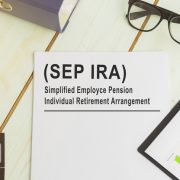Can a Self-Directed IRA Help Investors Diversify?
Investing is often about diversification to reduce risk, and investors are always looking for ways to minimize risk while maximizing returns. A Self-Directed IRA can be a powerful tool for diversification, allowing investors to move beyond traditional investments like stocks and bonds and invest in a wide range of assets. In this blog post, we’ll explore the ways in which a Self-Directed IRA can help investors diversify their portfolios. After all, a Self-Directed IRA provides great resources for investors who want to diversify not just their assets, but their overall asset classes, within a retirement portfolio. Here’s what you’ll need to know if you’re considering diversification as a retirement investment strategy.
What is a Self-Directed IRA?
First, let’s define what a Self-Directed IRA is. A Self-Directed IRA is an individual retirement account that allows the account holder to invest in a wide range of assets beyond traditional stocks, bonds, and mutual funds. With a Self-Directed IRA, the account holder can invest in alternative assets like real estate, private equity, precious metals, and more.
After all, one of the key benefits of a Self-Directed IRA is the ability to diversify an investment portfolio. By investing in a variety of asset classes, investors can spread their risk and potentially increase their returns. Traditional retirement accounts typically limit investments to stocks, bonds, and mutual funds, which can be vulnerable to market fluctuations and the latest stock market headlines. That’s not always a great way to feel, if you’re tracking the financial news.
As we stated, with a Self-Directed IRA, investors have access to a wider range of investment options, which can help to protect their portfolio from economic uncertainty. But how you do so will be on your terms. Additionally, diversification can provide investors with exposure to markets that are not correlated with traditional assets, which can potentially enhance returns and reduce overall risk.
The Benefits of Diversification
Diversification is an essential strategy for managing risk in any investment portfolio. By spreading investments across a range of asset classes, investors can reduce their exposure to any single asset or market sector. This can help to protect their portfolio from market volatility, economic downturns, and other risks.
How a Self-Directed IRA Can Help Diversify Your Portfolio?
A Self-Directed IRA can help diversify your portfolio by providing access to a wide range of alternative assets. For example, investing in real estate through a Self-Directed IRA can provide exposure to an asset class that is not directly tied to the stock market. Similarly, investing in precious metals can provide a hedge against inflation and market volatility.
Risks to Consider When Investing in Self-Directed IRAs
While investing in alternative assets can provide diversification benefits, it’s important to understand the risks involved. Alternative investments tend to be less liquid than traditional assets, which means that it may be more challenging to sell them quickly if needed. Additionally, alternative investments often require more research and due diligence, as they are less regulated than traditional investments.
A Self-Directed IRA can be an excellent tool for investors looking to diversify their portfolios. By providing access to a wide range of alternative assets, investors can reduce their exposure to market volatility and other risks. However, it’s important to understand the risks involved in investing in alternative assets and to do your due diligence before making any investment decisions with a Self-Directed IRA.
Interested in learning more about Self-Directed IRAs? Contact American IRA, LLC at 866-7500-IRA (472) for a free consultation. Download our free guide or visit us online at www.AmericanIRA.com.









